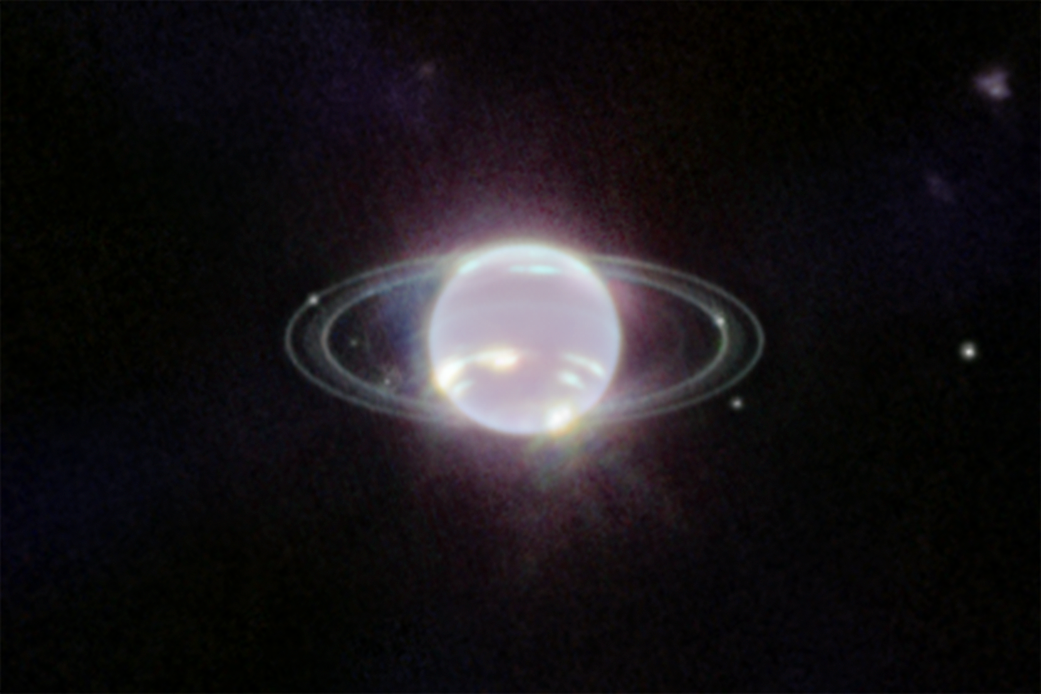On Sept. 21, 2022, the James Webb Space Telescope delivered the clearest view of Neptune’s rings in more than 30 years. Webb’s Near-Infrared Camera (NIRCam) captured several bright, narrow rings as well as the planet’s fainter dust bands. Voyager 2 was the last to detect some of these rings during its flyby in 1989, but this is the first time we have an infrared image of them.
Since NIRCam images objects in the near-infrared range from 0.6 to 5 microns, Neptune does not appear blue to Webb. In fact, the methane gas so strongly absorbs red and infrared light that the planet is quite dark at these near-infrared wavelengths, except where high-altitude clouds are present. Those methane-ice clouds are prominent as bright streaks and spots, which reflect sunlight before it is absorbed by methane gas.



























